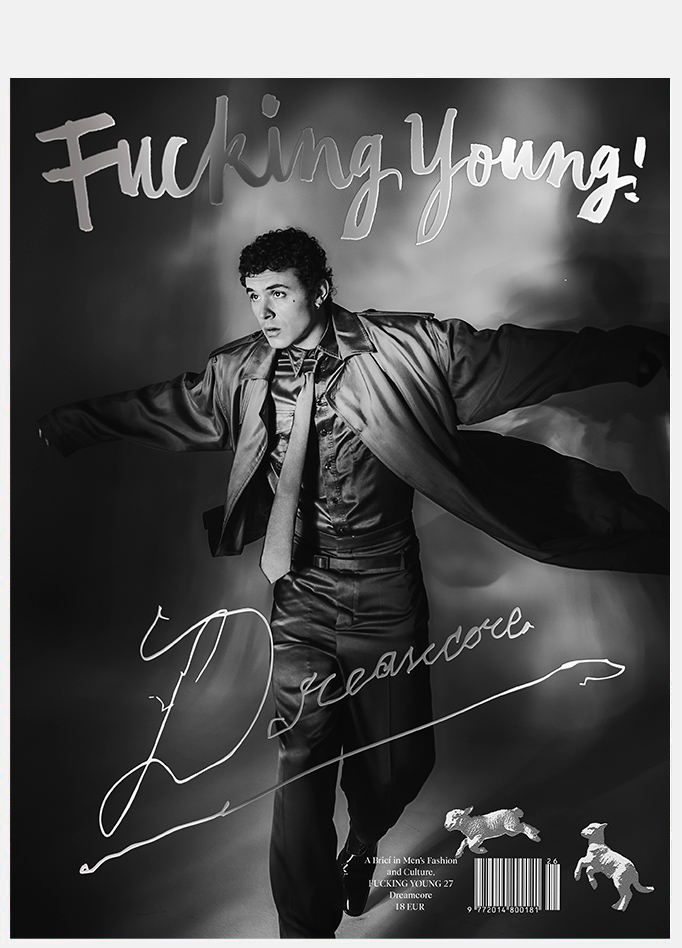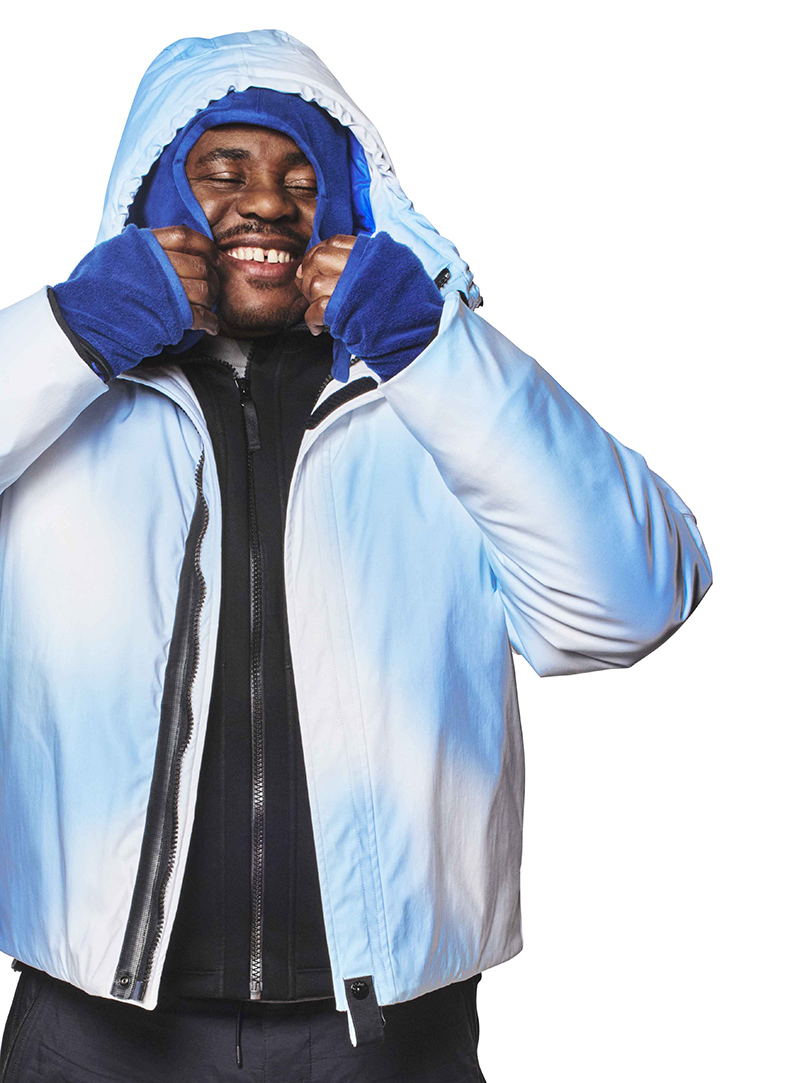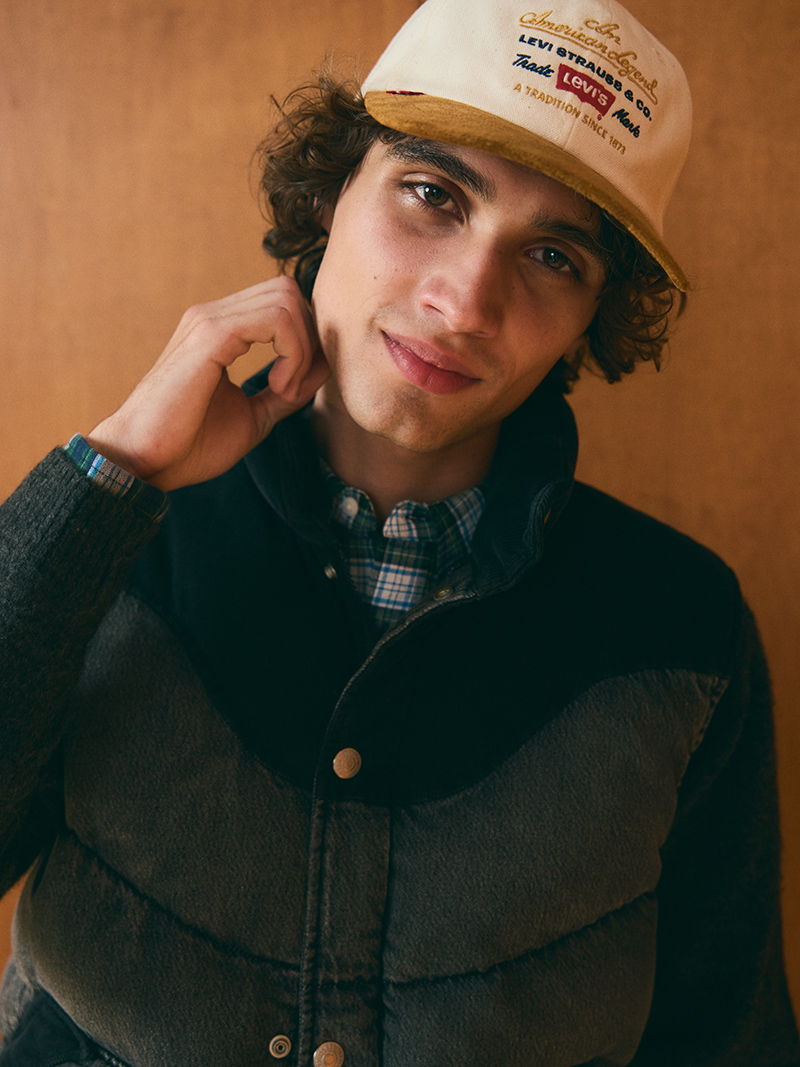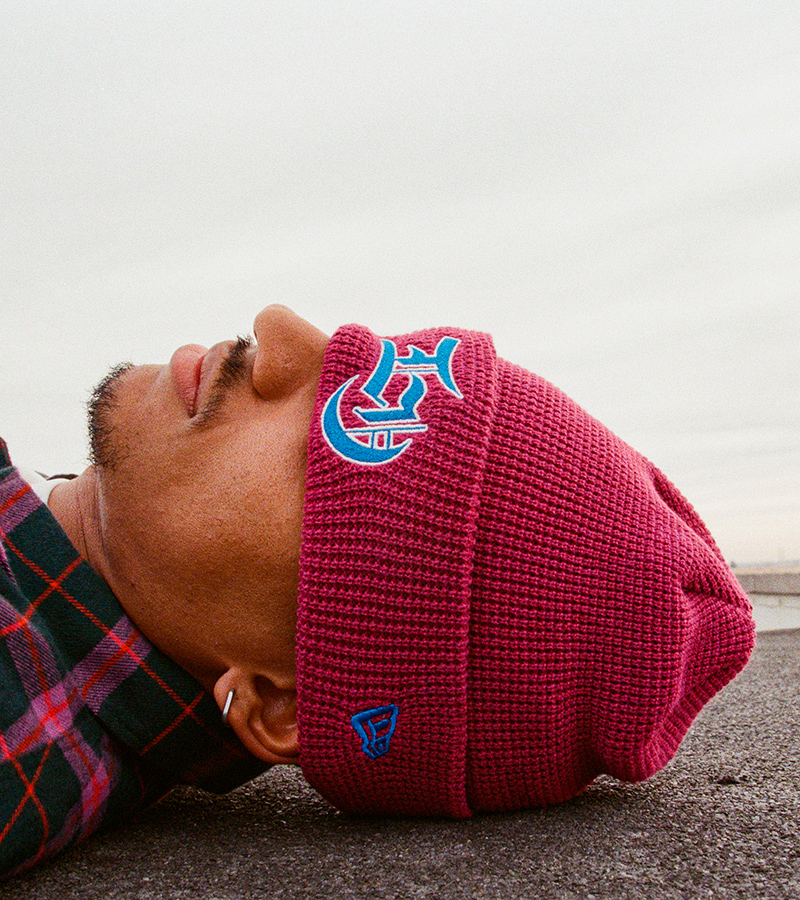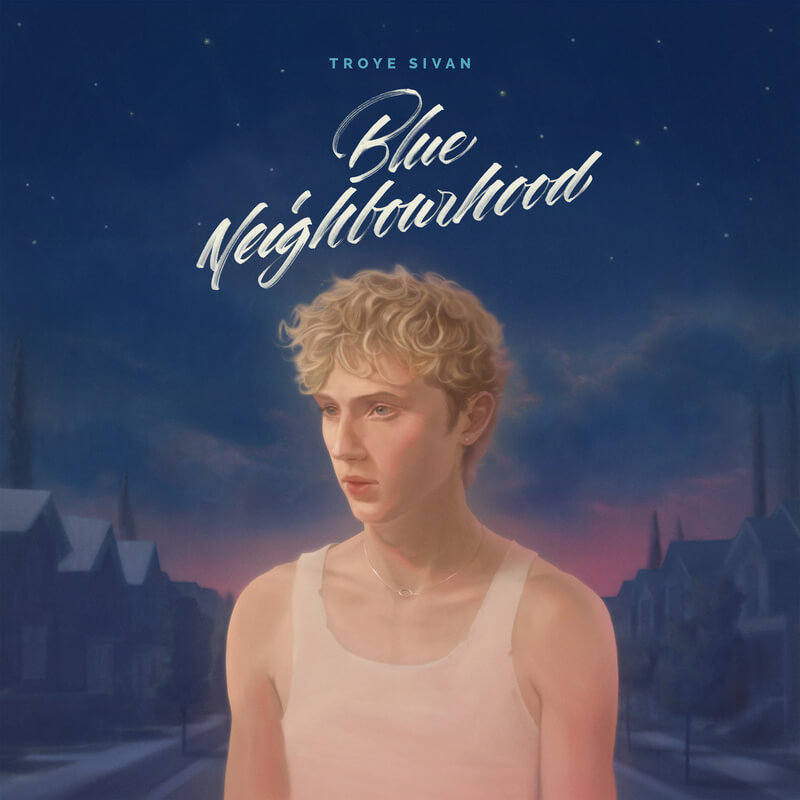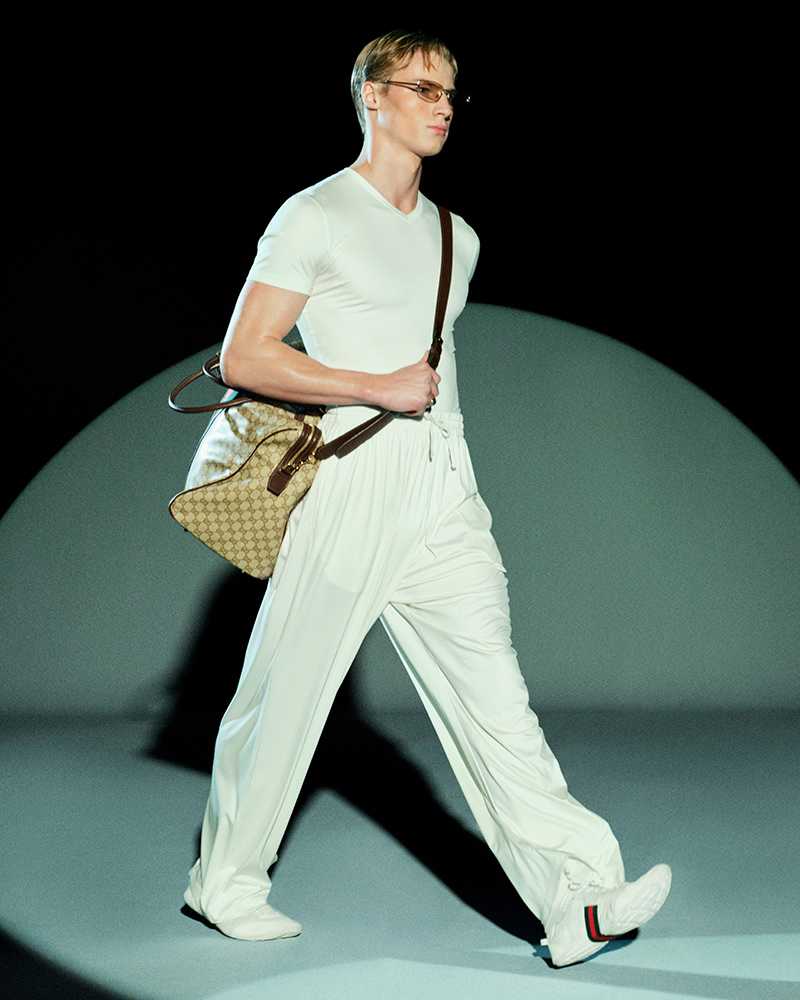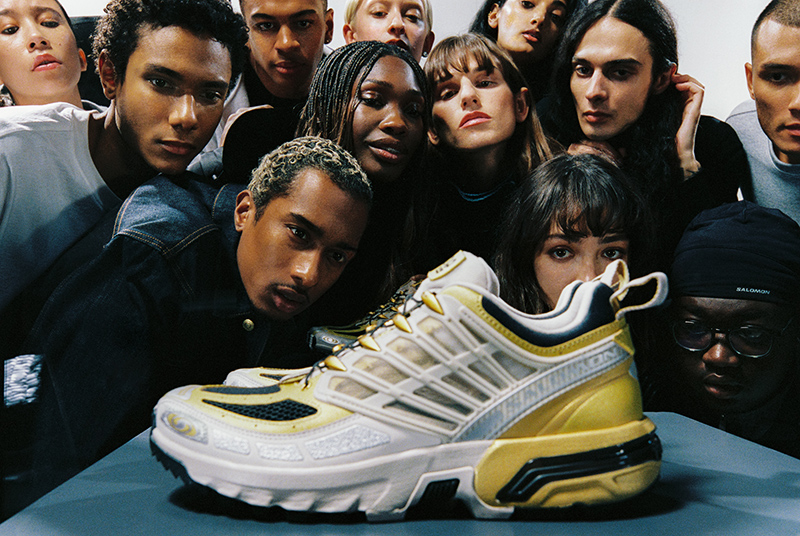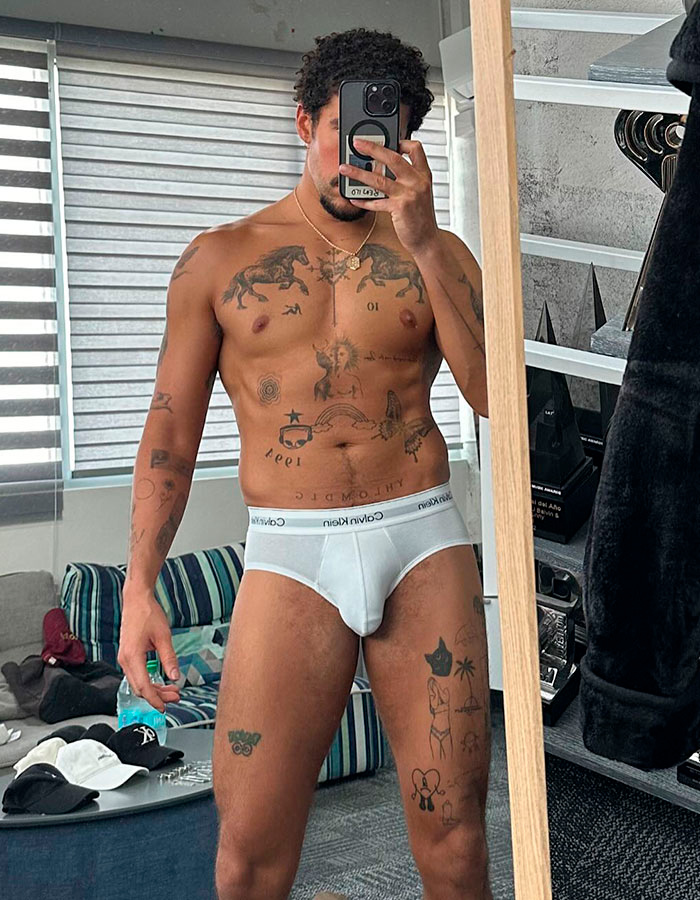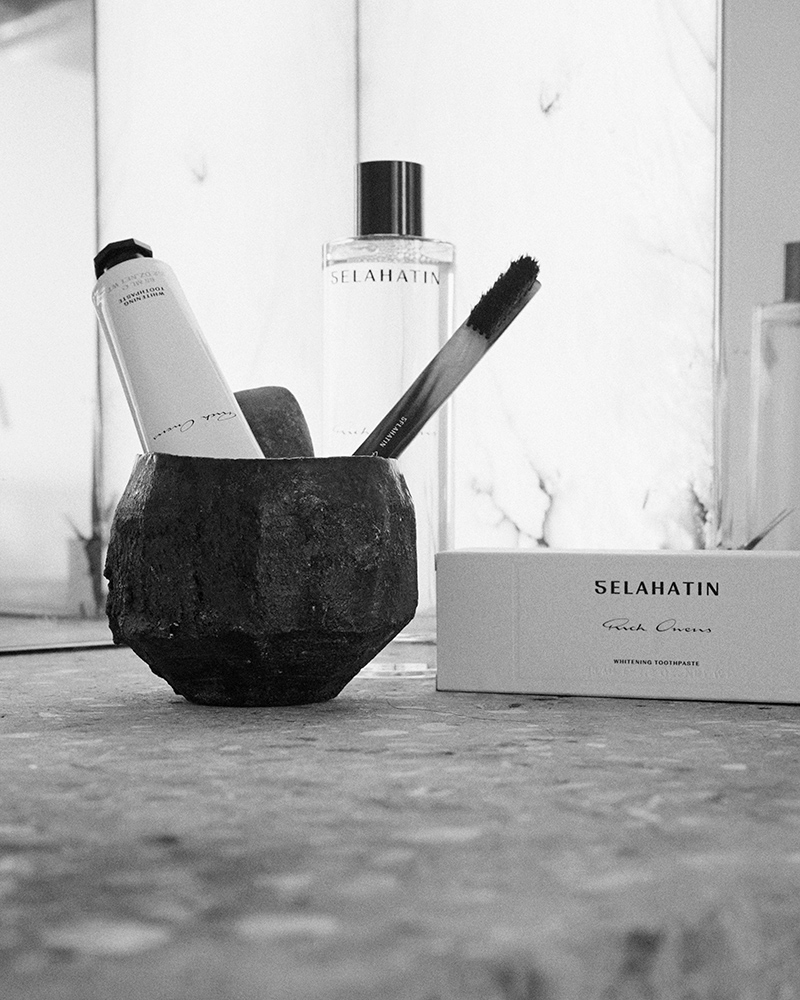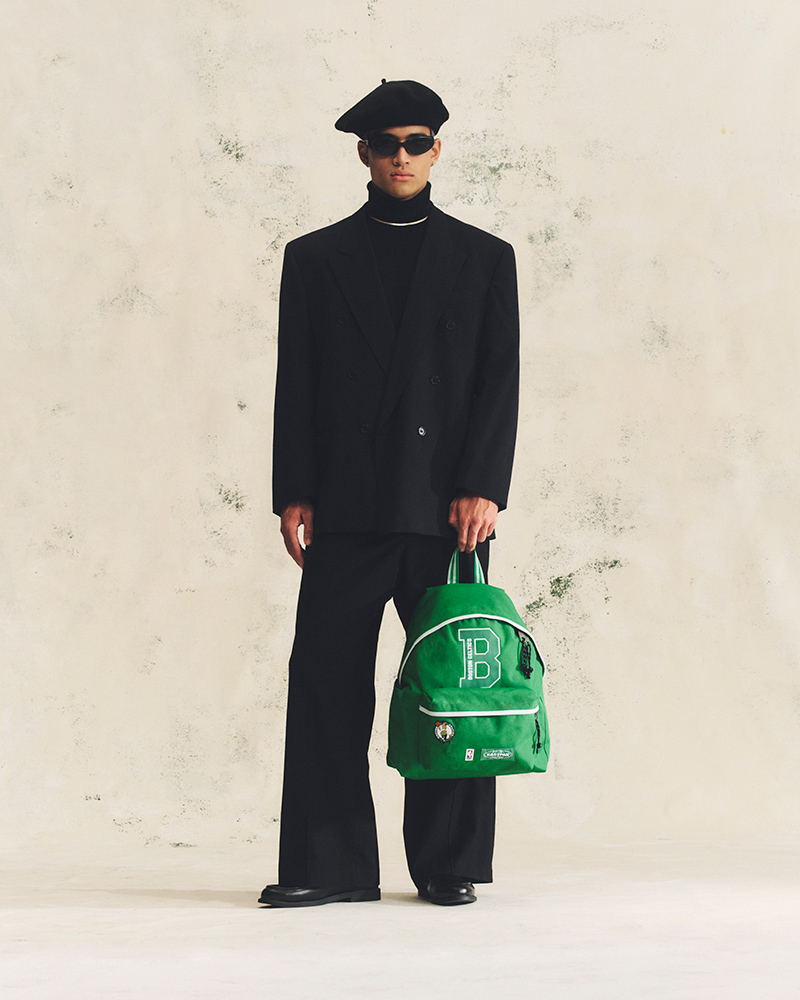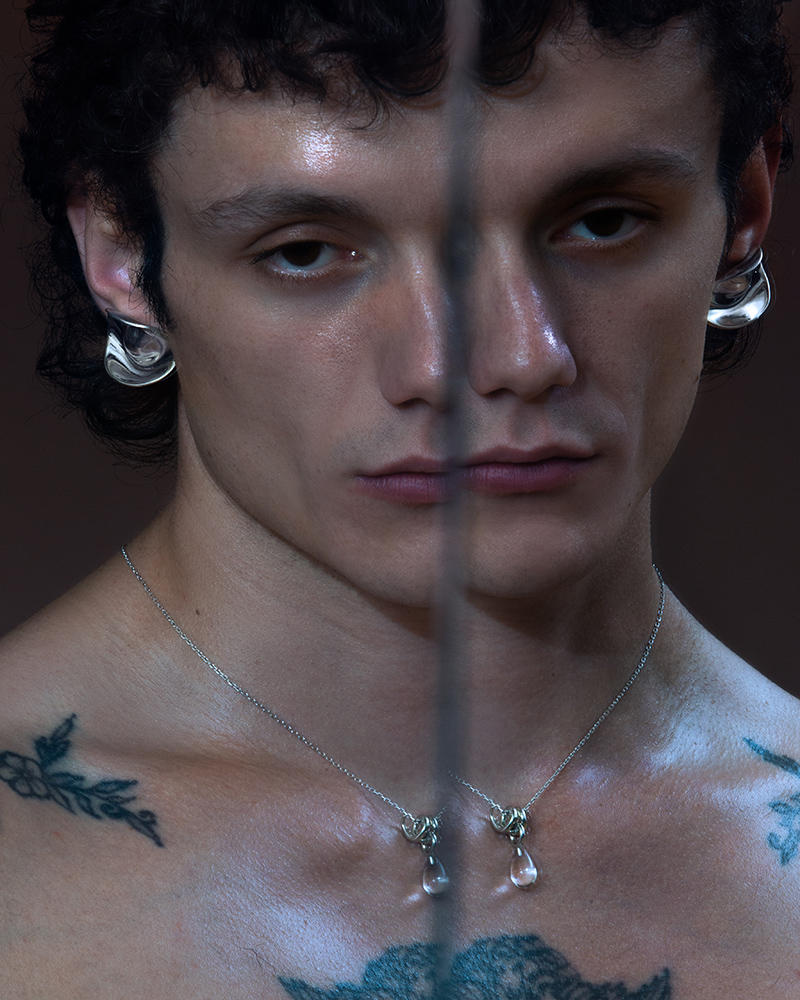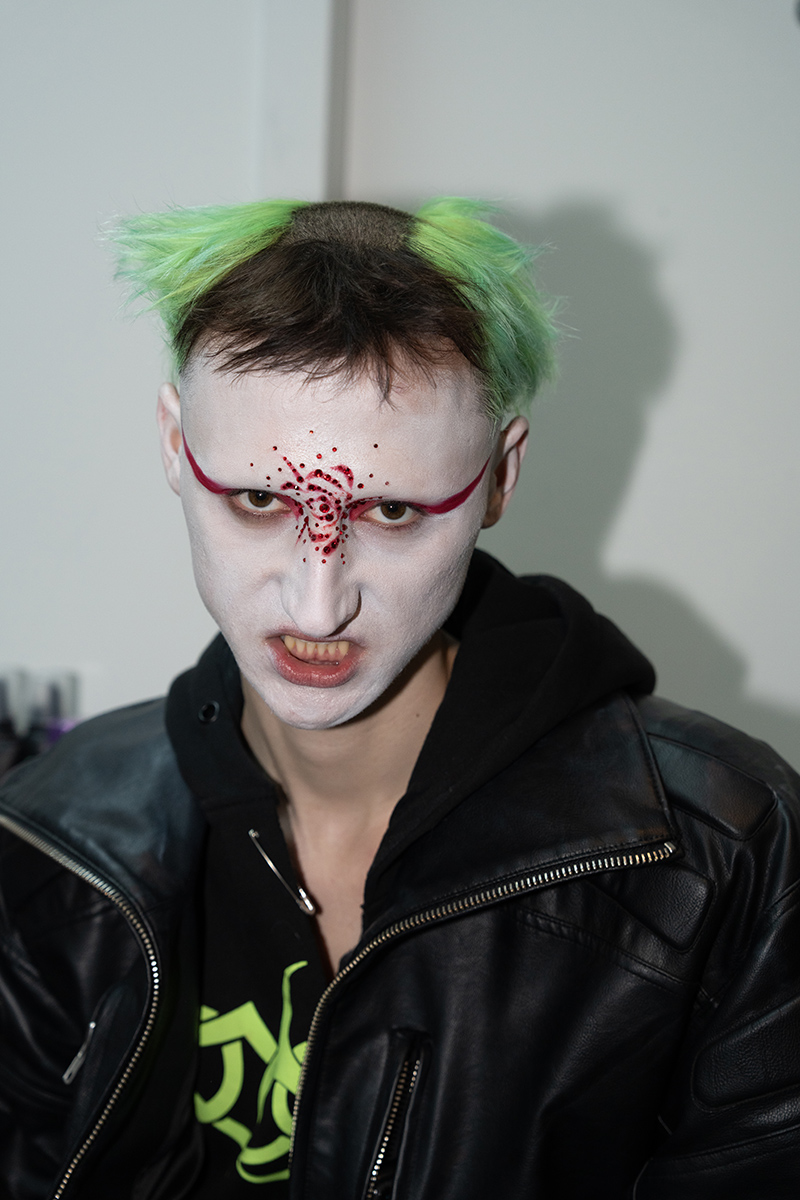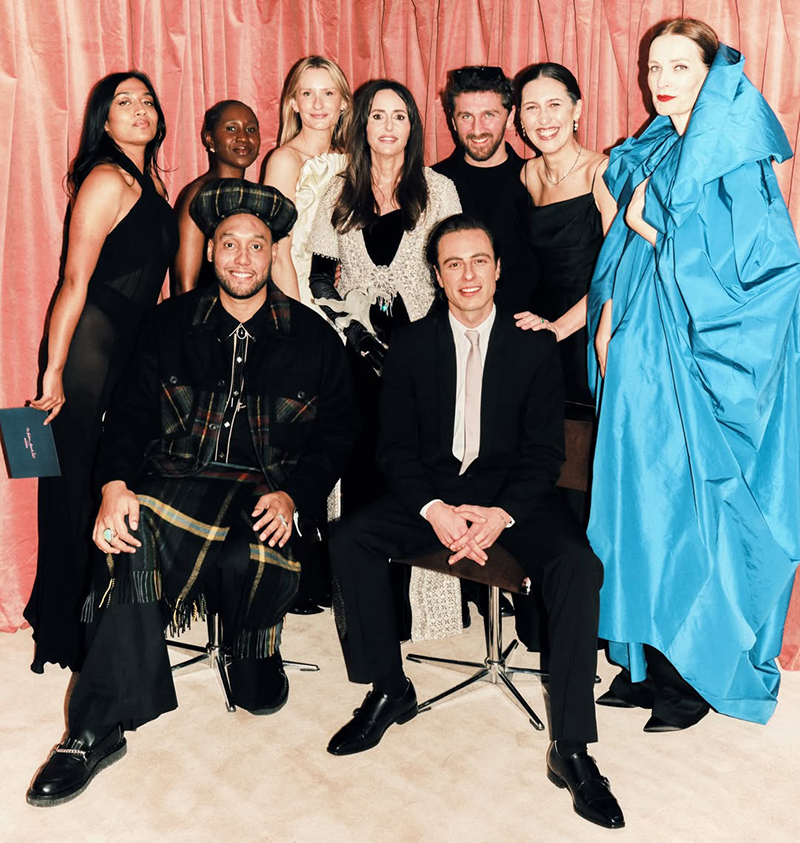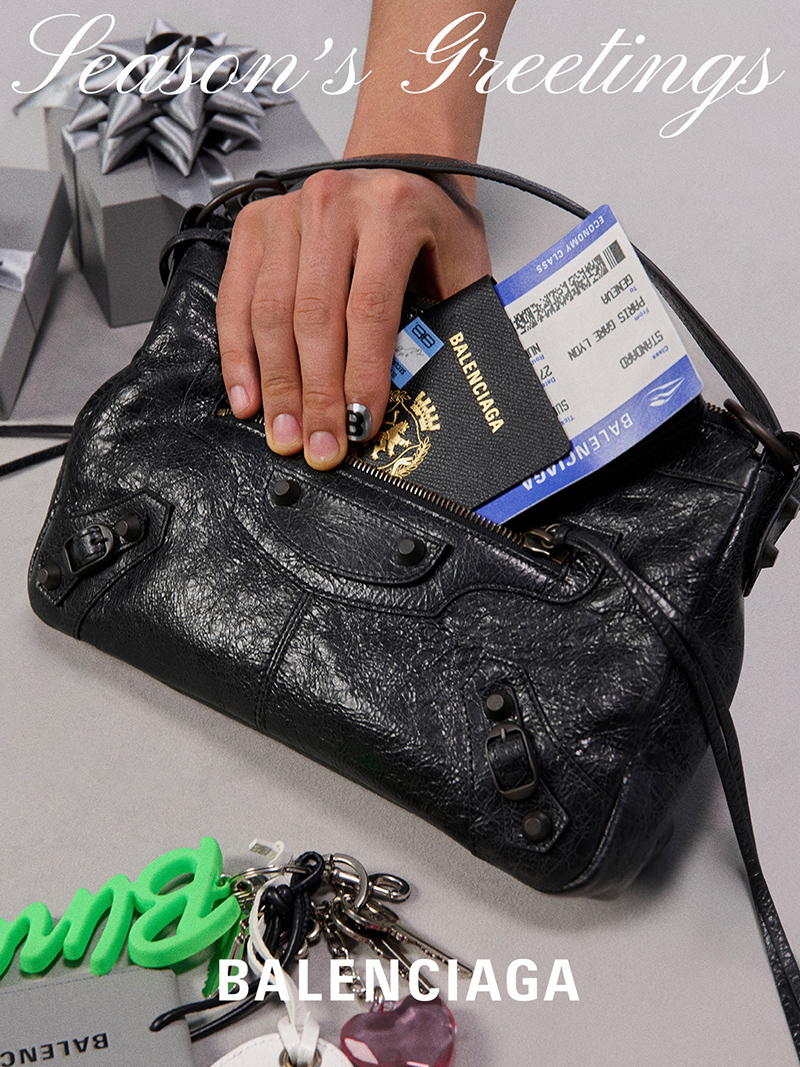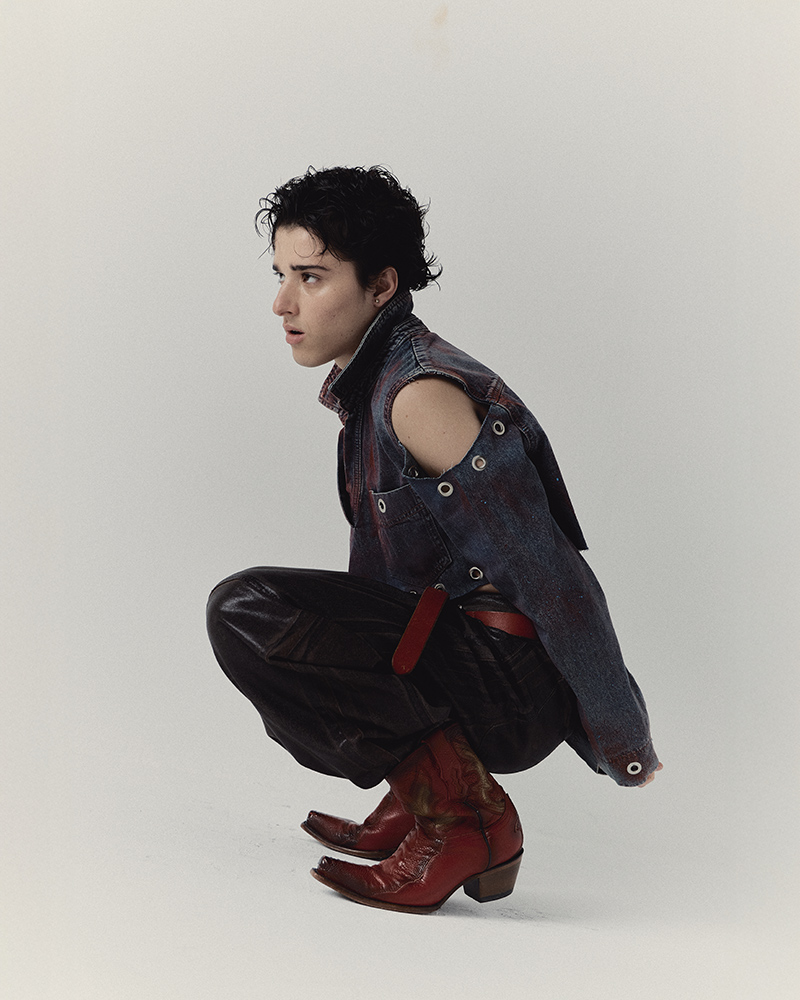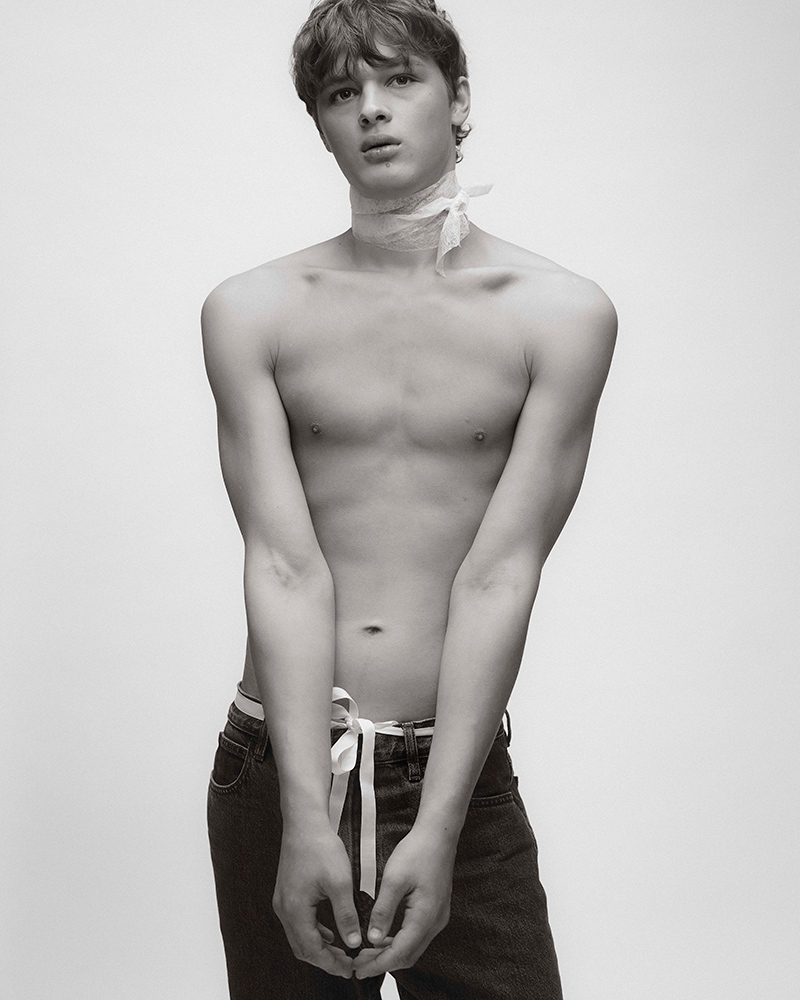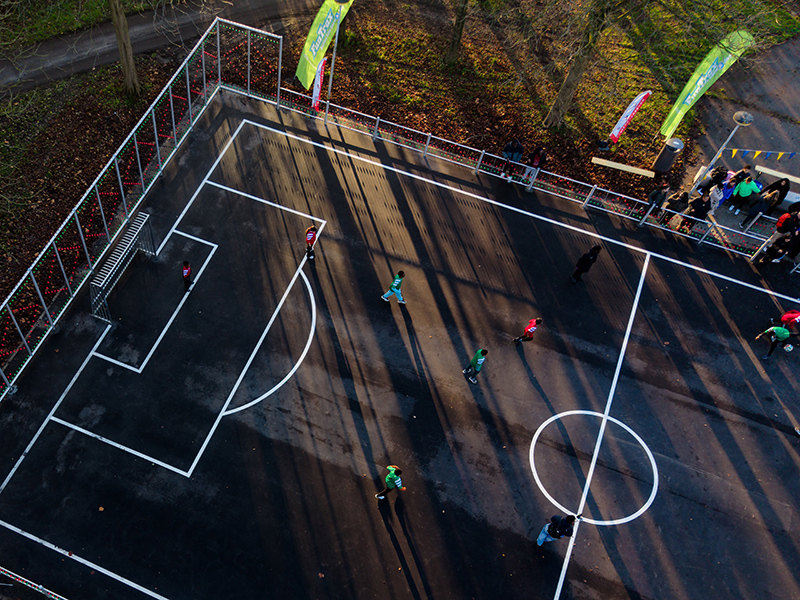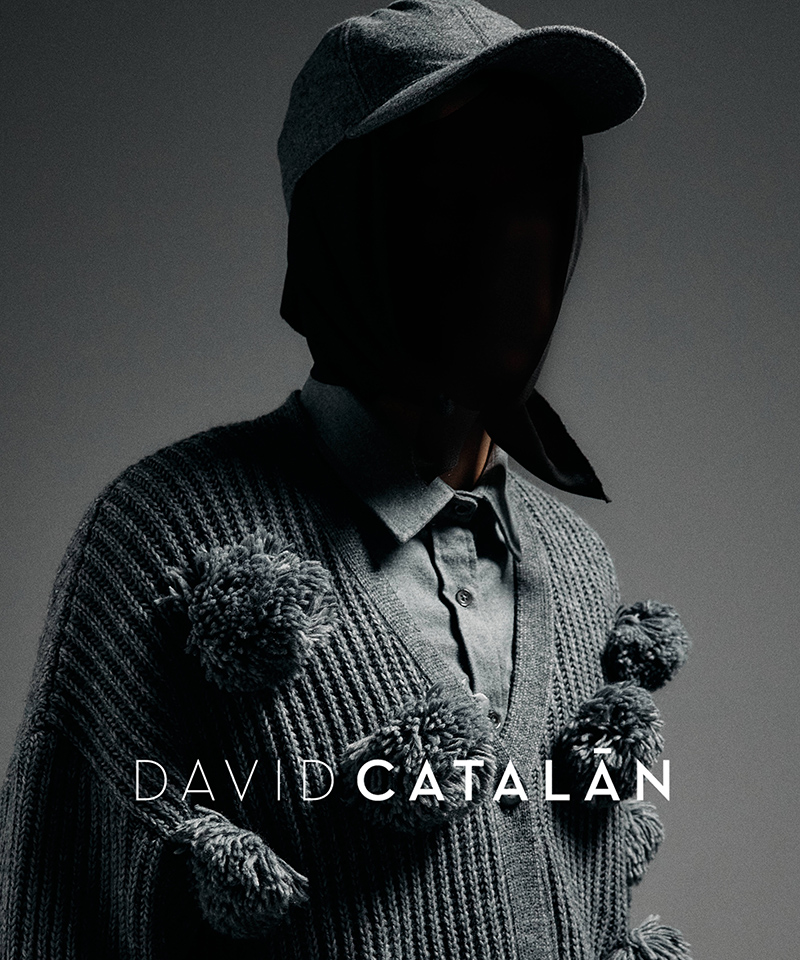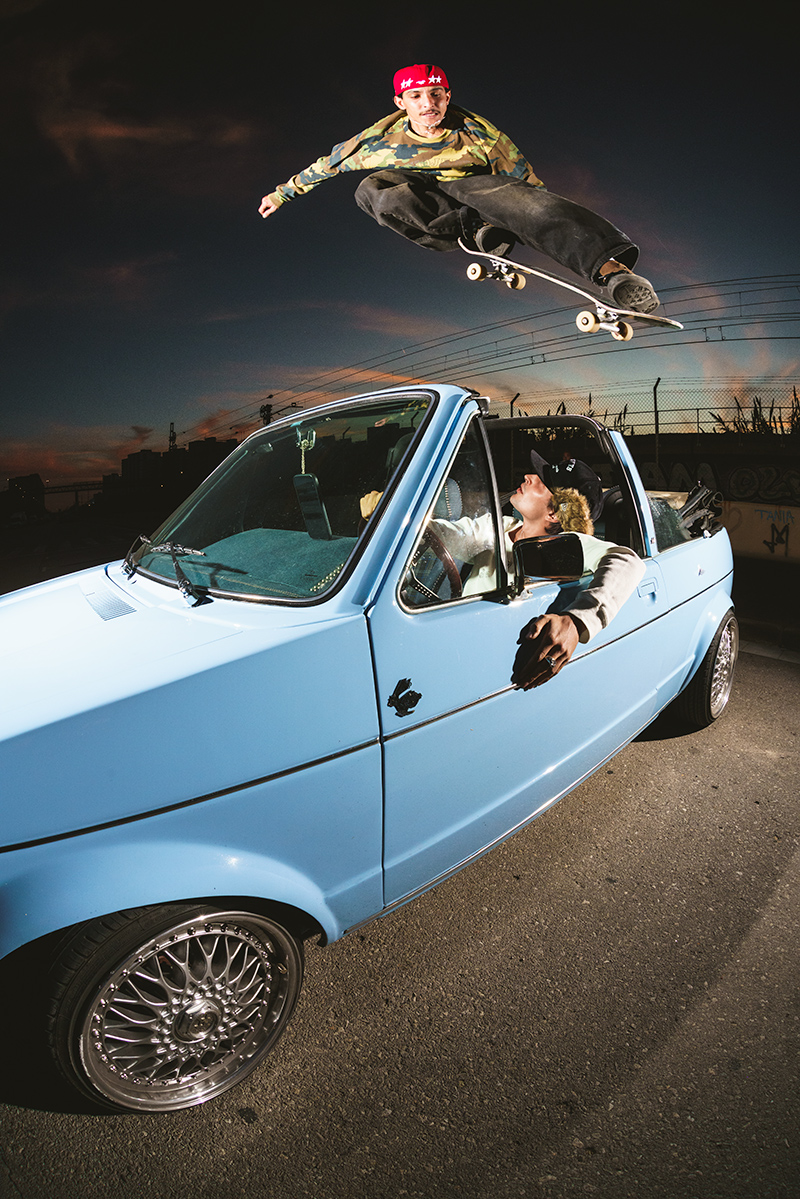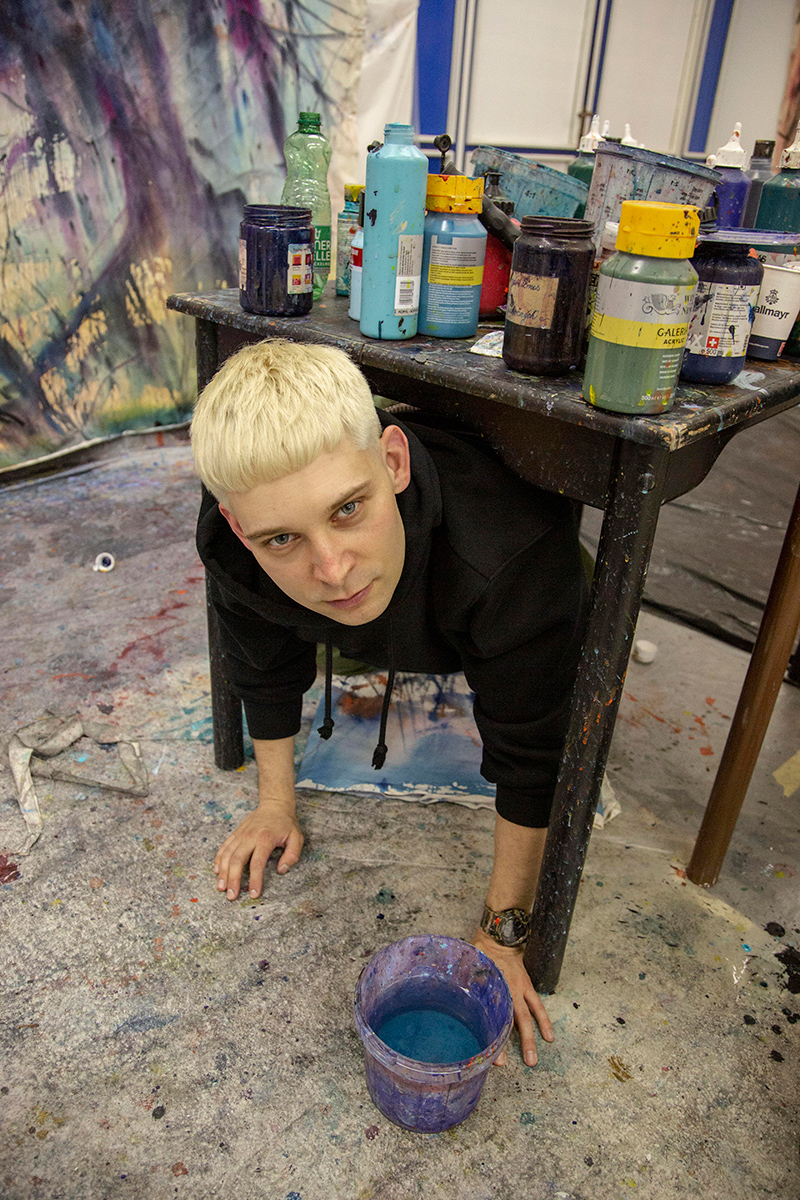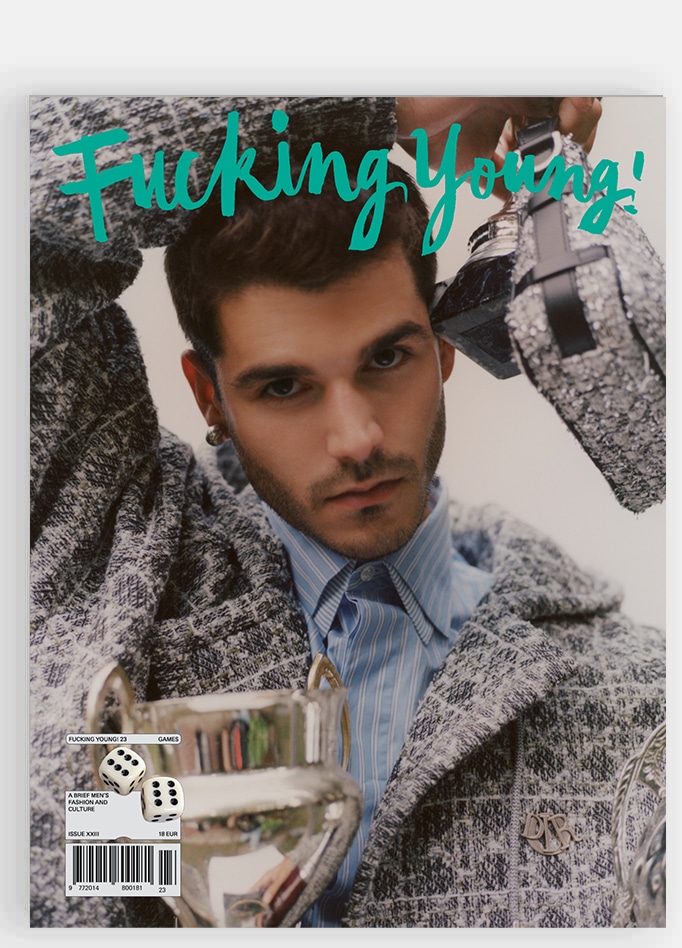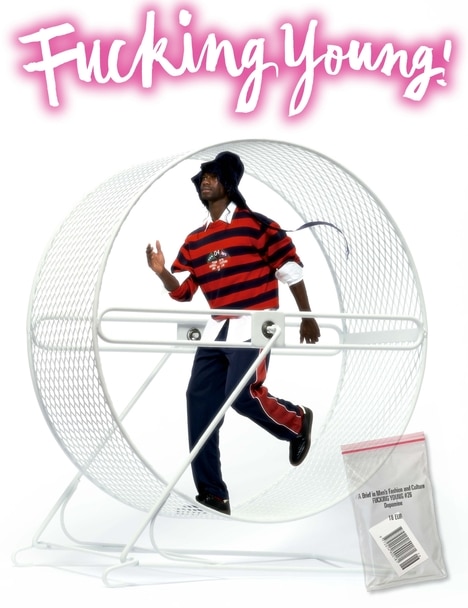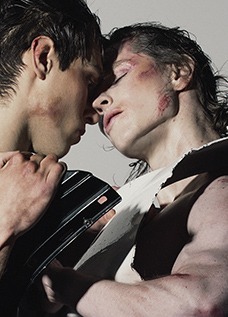We headed down to Geneva over the weekend for the HEAD Fashion Show, made up of 23 Bachelor and 8 Master graduate collections offering a fresh, diverse, and contemplative reading of what clothing can be today. With a jury made up of industry experts including Sarah Mower, Marco Russo (Louis Vuitton), Mauro Grimaldi (Richemont), Serge Carreira, Niccolò Pasqualetti, Kevin Germanier and designer Lutz Huelle who heads up the Fashion Department, students showed their collections in a setting similar to those of the professional world allowing to confront their work with the realities of the industry.
From street casting to the scenography designed by Alexis Lang, a Bachelor student in Interior Architecture at HEAD, the show that also brought together the Jewelry and Fashion Departments was a real group effort, creating a shared experience around a shared love of creativity. If you ever asked me what my favourite part of working in fashion is, I would tell you the people you meet and collaborate with.
The international jury awarded six major prizes celebrating the excellence and individuality of the students’ collections:
Matil Vanlint, Prix de la Fondation Vahabzadeh and Prix Master Association of Swiss Women and Empowerment
Mélanie Schiewe, Prix de la Commune de Collonge-Bellerive
Ewen Danzeisen, Prix La Redoute x HEAD
Prix Bongenie, Léon Narbel
Asma Haddad, Prix Bal Créateurs


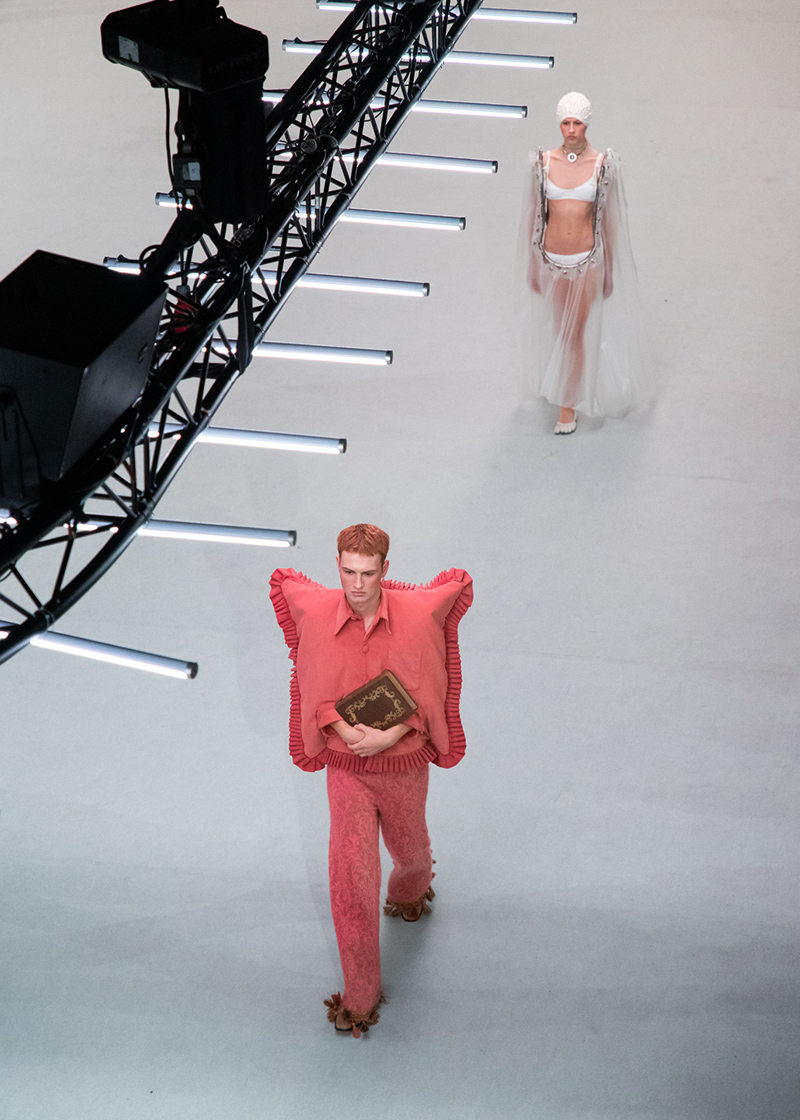
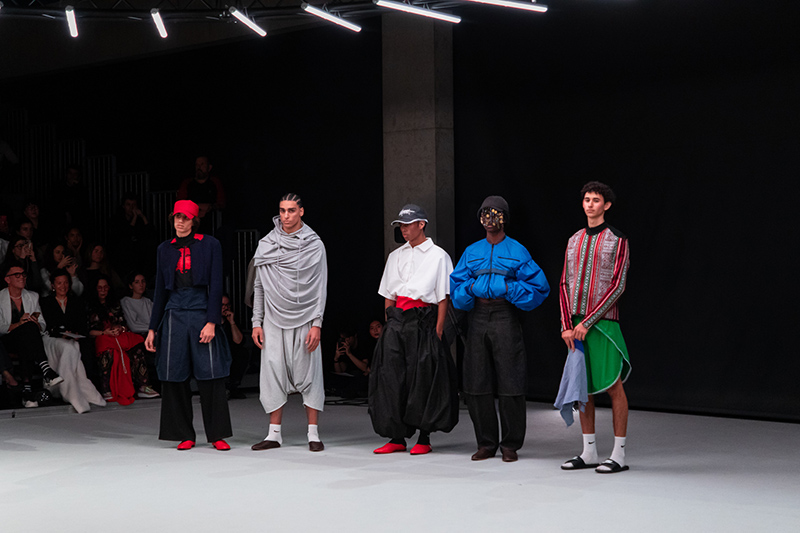
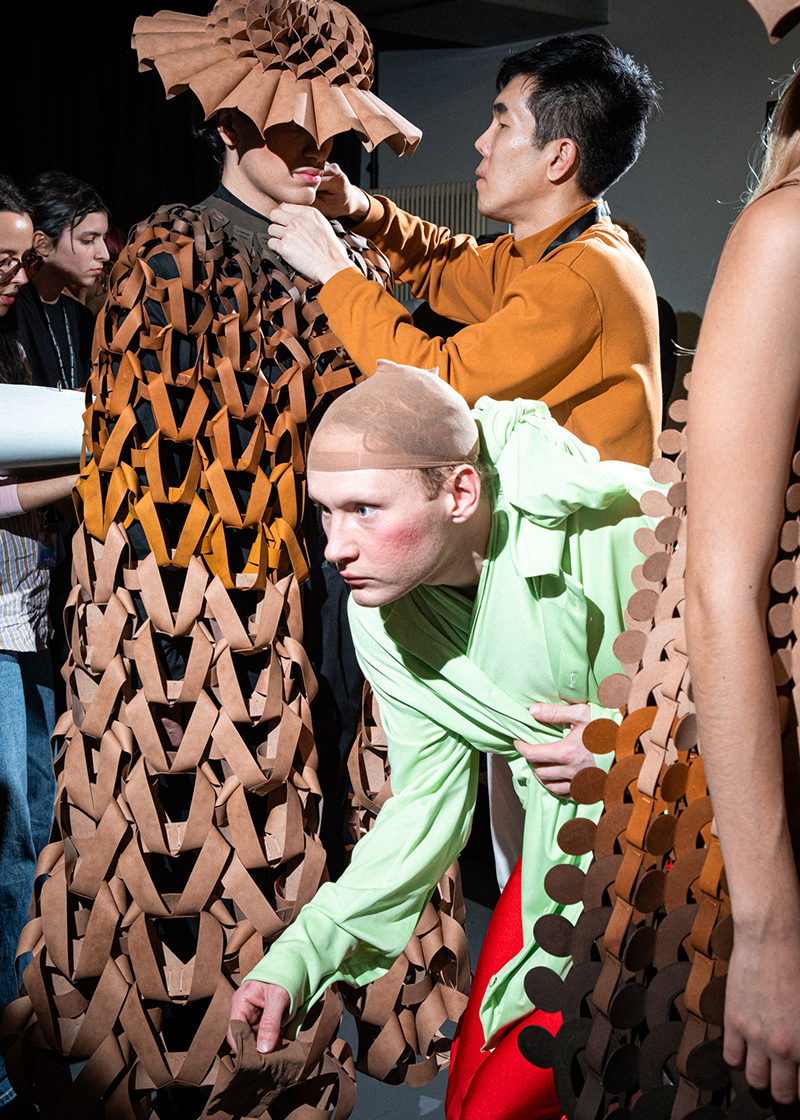





HEAD Fashion Show 2025 imagery by Raphaelle Mueller
A selection of Collections and Concepts from HEAD:
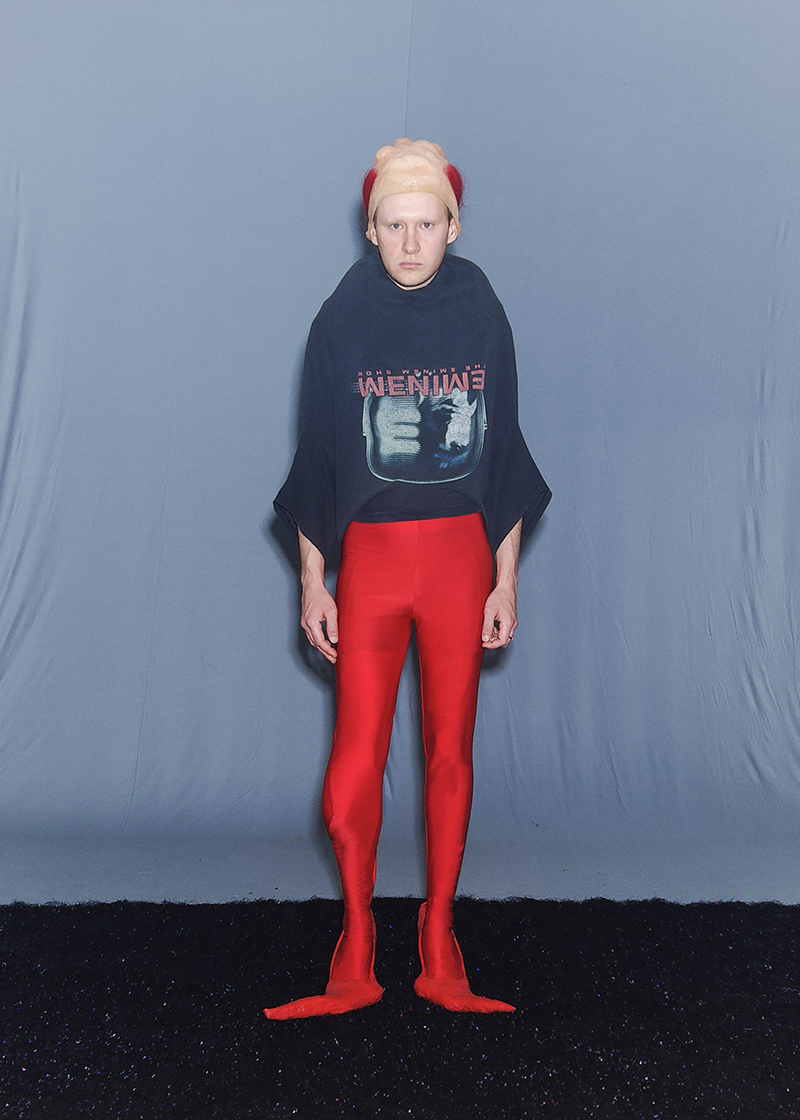
V* by Matil Vanlint
Victim, Violence, Victory. What would our bodies look like if our traumas left physical distortion? How, through clothing, my practice, and the notion of the collective, did I find my place — my way to embrace monstrosity and mutation? How, through “us,” did I find comfort? Through this collection, I share a part of my journey. A collection as a manifesto for life. As Jack Halberstam said, « There is activism in being happy and celebrating forms of joy that persist when the only images of ourselves presented to us are those of misery.

Pretty In Pink by Mélanie Schiewe, photo ©Léa Sblandano
My collection is a personal exploration of clothing and the perceptions it generates. It is based on an intimate observation: the way I am perceived changes dramatically depending on whether I wear garments associated with the masculine or feminine wardrobe. This duality led me to question gendered clothing codes and their social impact. My project aims to blend key elements from both masculine and feminine wardrobes to create a wardrobe that reflects my identity, offering an attempt to deconstruct these stereotypes in a humorous and caricatural way.

Artificial Bloom: Embodied Hybrids by Arsen Aeby, photo ©Séraphine Sallin-Mason, Collaboration with Elsa Wermeille
A queer and speculative fashion collection exploring post-human identities through hybrid and collaborative designs. Blending the elegance of 1930s wardrobes with handcrafted electronic circuits, each look transforms into a cyborg persona—fluid, connected, and in motion. An alternative language emerges through noise, imagining new rituals and uncharted bodies.
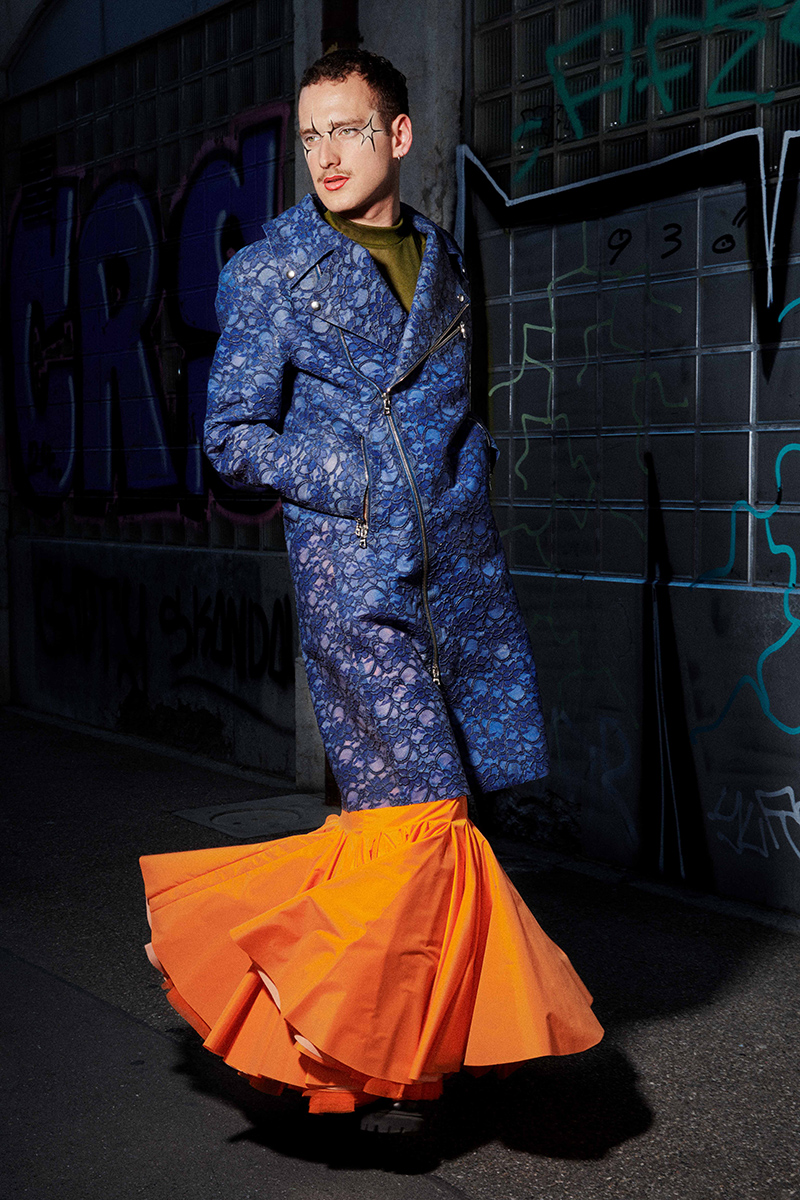
Nocturnal Playgrounds by Iwan Hochstrasser, photo ©Laurent Fiorentin
Nocturnal Playgrounds explores identity through the transformative energy of queer nightlife, where the club becomes a space of playful exploration and reinvention. Following different stages during a night out, the collection draws inspiration from a queer and campy nightlife wardrobe and reflects the fluidity of becoming selves at queer raves.

Eclectic interiors by Apolline Descombes, photo ©Raphaëlle Mueller
Inspired by the interiors that cradled my childhood, this collection is an ode to the domestic world. Part architectural fantasy, part poetry of the everyday, each piece becomes a space to inhabit, blending garment, furniture, and memory.
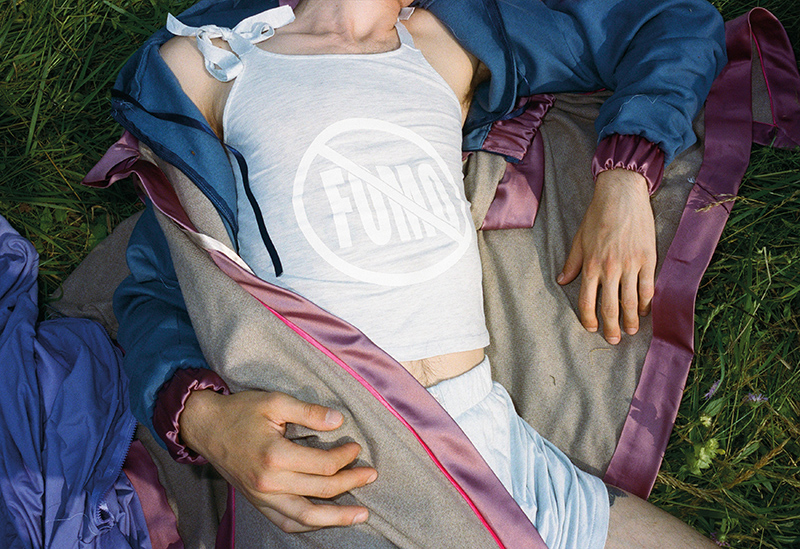
Je déteste Instagram by Baltazar Nanchen, photo ©Matteo Moschella, jewellery and accessories by Catarina Santos Moreira
This work is rooted in personal reflections on anxiety and the challenge of getting out of bed. Using sportswear garments and bedding materials, the collection suggests a space for rest and quiet resistance — a response to the pressure to always be present and connected.

When Hope Is Not Enough by Thongchai Lerspiphopporn
The collection explores the boundaries between fashion and jewelry by questioning the adequacy of conventional definitions. “Hope” symbolizes inherited frameworks — where fashion is clothing, and jewelry is adornment. When these no longer serve new creative visions, invention becomes essential. Drawing from a background in jewelry design, the collection transforms traditional techniques into structural language: prong and pavé settings become fastening systems; chainmail turns into interlinked leather forms; and basketry and weaving are reimagined to build fluid yet resilient skins. Each piece is hand assembled from flat materials into sculptural forms. These jewelry-like garments do not merely adorn the body — they define it. Existing between disciplines, they merge craftsmanship and fashion into a new material expression.

Shadows In The Fields by Aleksandra Bystrova, photo by Anaïs Perret
This collection is inspired by the traditional clothing of Russian peasants and shaped by a deeply personal exploration of depression. It merges utilitarian garments, humble materials, and ancestral techniques, notably hand-felted wool. Through black-and-white silhouettes evoking heaviness, protection, and constraint, it explores the quiet intersection of collective memory and lived experience, seeking a visual language for emotional extremes and the resilience found in silence and shadow.
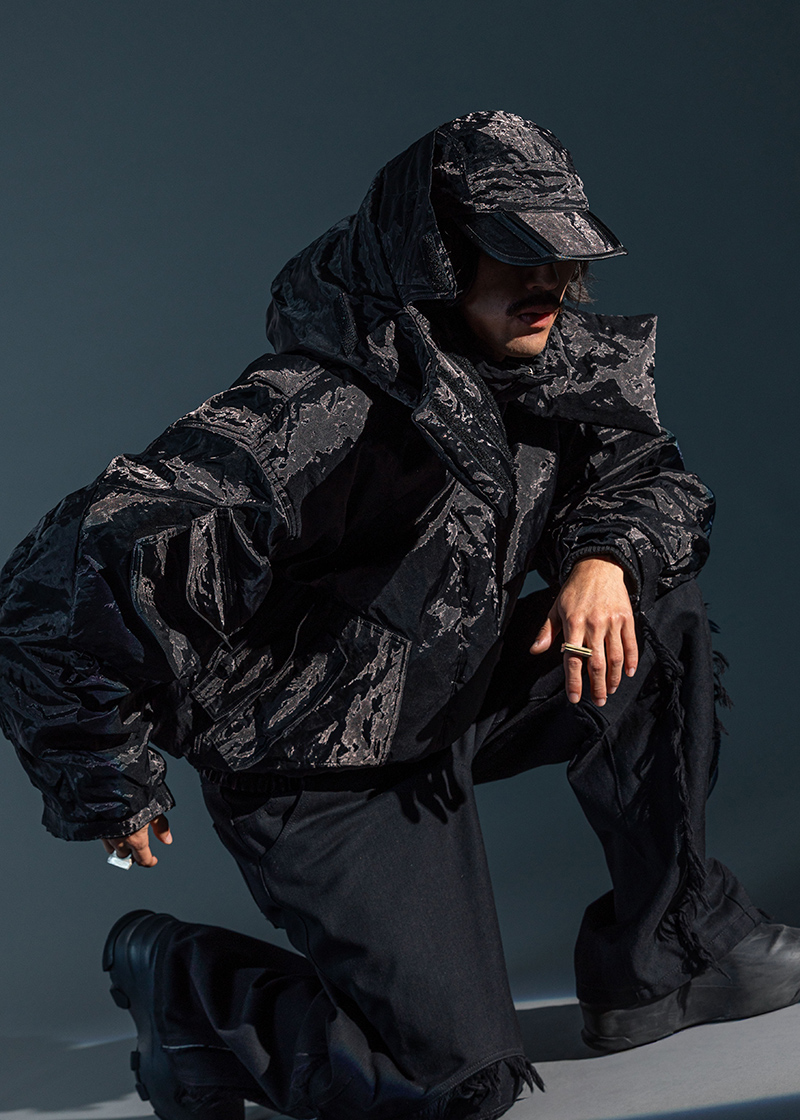
Meet the Crows by Ewen Danzeisen, photo by ©Hannah Bordier, Sponsors: GruppoCinque, Jakob Härdi AG, Berto Industria Tessile
Silhouettes made to be worn, not seen. Nothing to see, a lot to look at. Back and shoulders to define one’s space, a silently impressive posture. Soft garments with an assertive edge. A black spectrum that’s not inviting, yet makes you want to look closer. So please come closer and meet the crows.
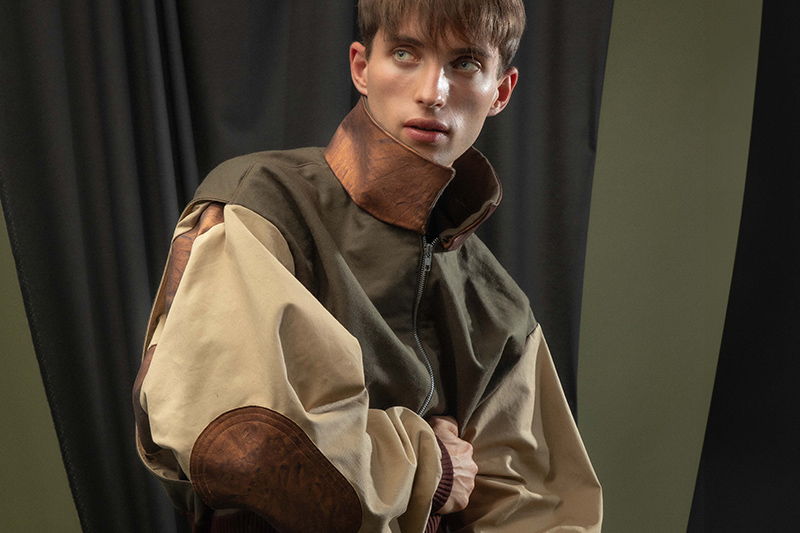
Orthosis & Corium by Baptiste Pons, photo ©Raphaelle Mueller
I explore the porosity between clothing and medical devices, creating hybrid silhouettes inspired by prostheses and orthoses. My intention is to reinterpret these objects, generally perceived from a purely functional angle, and integrate them poetically and subtly into clothing, blurring the boundaries between body and garment.
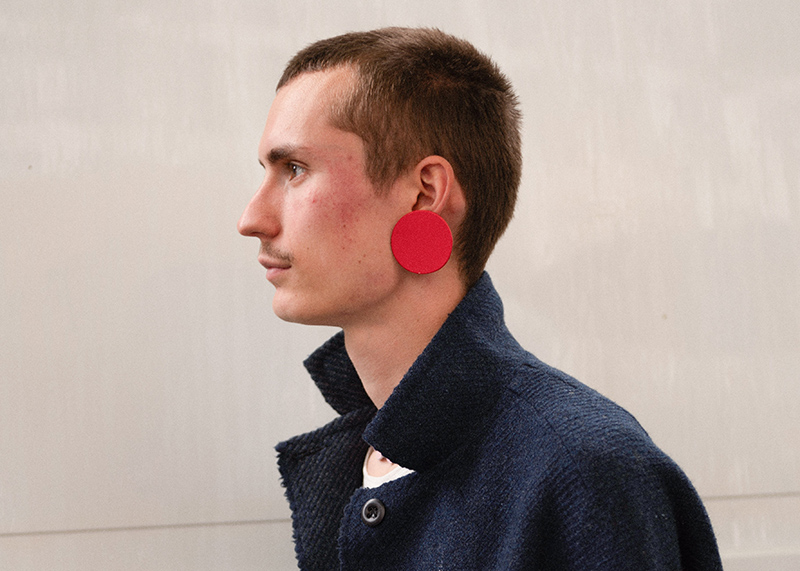
Noms, prénoms by Léon Narbel, photo by Auriane Nicollier
This work presents adaptable and durable garments made from natural and second-hand materials. The idea is to focus on everyday comfort, while aiming for longevity through pieces that can evolve. I try to keep things simple and timeless in the design while adding twists in the patternmaking, with the intention of creating clothes that are pleasant to wear — somewhere between softness and protection, between pyjama and armor.
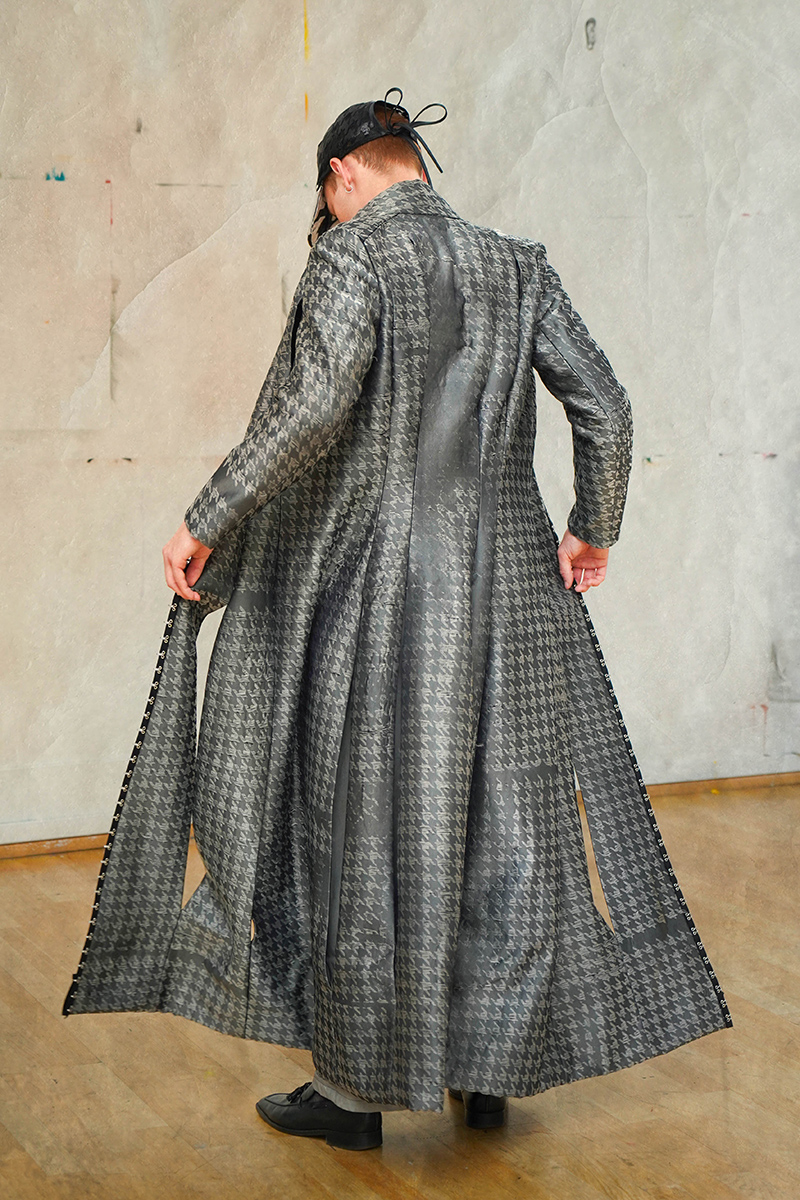
Madeleine by Norma Morel, photo by ©Tanguy Catin, jewellery by Alicia Mader
The house had three floors, each seemingly frozen in time. On the second floor, a sewing room overflowed with lace, corsets, and antique fabrics. A wooden mannequin wore a black silk and lace dress, embroidered tone-on-tone with fascinating precision. I was captivated. This dark house, filled with black wooden furniture, felt like a cabinet of curiosities. At sixteen, in an oversized hoodie and sneakers, I stood before these history-laden garments in my grandmother’s atelier. My collection is a conversation between past and present, a blend of codes, a play between delicacy and structure. It expresses who I am today: a mixture of memories and contrasts.
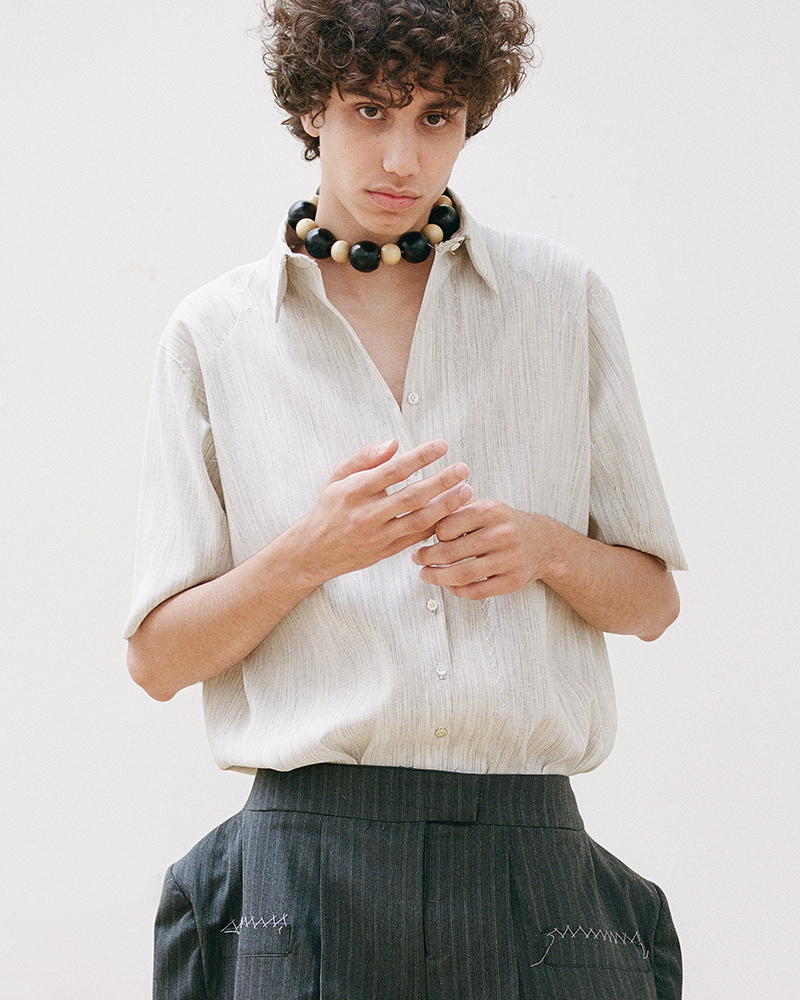
The salt is in the hem by Pamela Bitzi, photo by ©Léa Isoard
My collection is about the connection between generations, remembering familial heritage, and childhood memories. Through wardrobe exploration and archetype analysis, I created a dialogue between my grandfather and myself while incorporating strange family traditions and superstitions that shaped the person I grew up to be.

The Distance 0 by Majd Eddin Zarzour, photo by ©Sophie Marchesi, Sponsor: SEP
The collection The Distance 0 is inspired by asymmetrical warfare applied to fashion by radicalized minorities to combat social injustice. I was inspired by three minorities: the queers, the anarchists, and the pro-Palestinian activists.
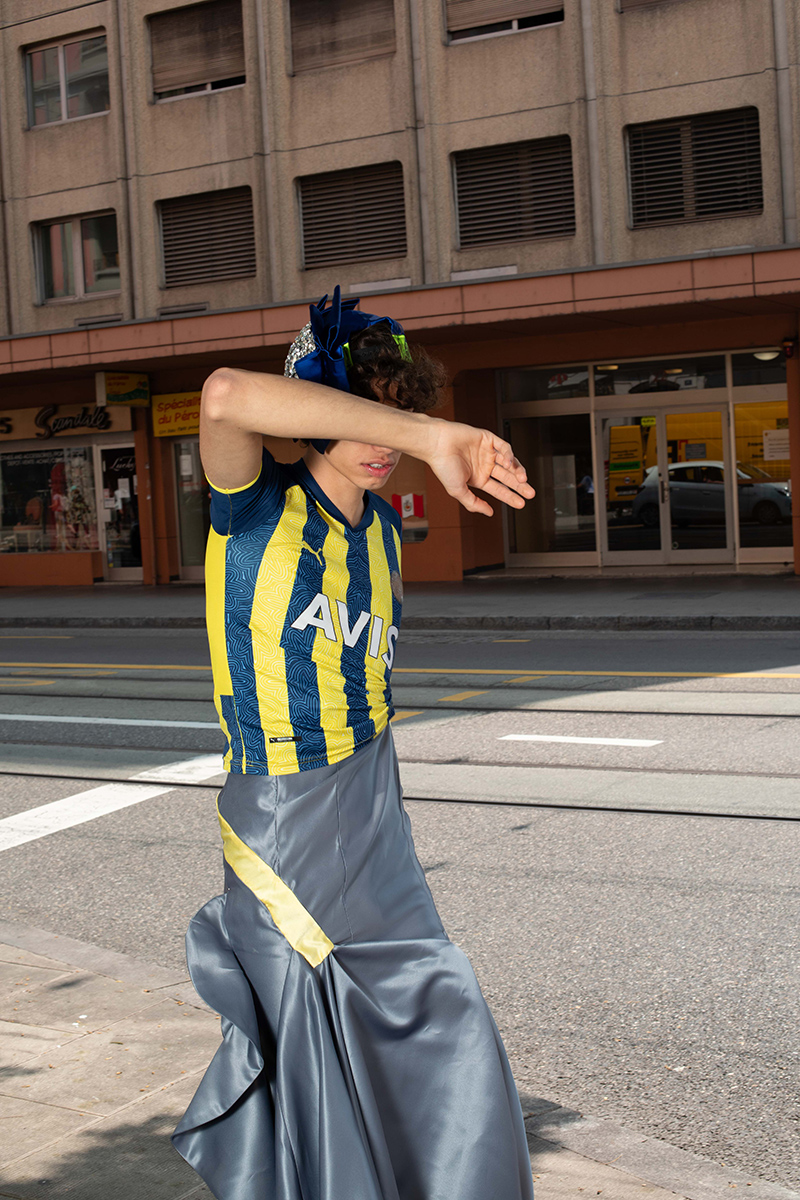
Scotché by Maïa Malige, photo by ©Yann Difford, jewellery by Julien Zweifel, sponsor Lang Yarns
My mother would always come home from filming with tape stuck to her clothes. I wanted to celebrate that trace and turn it into a creative gesture. For my collection, I taped elegant garments to more casual pieces, creating a wardrobe that blends sophistication and ease.

Il fera beau dans mes yeux by Samuel Gagliardo
Il fera beau dans mes yeux (The Sun Will Shine in My Eyes) is a collection that explores the five stages of romantic grief through an intimate narrative. The body embodies a crow, a witness and messenger of grief. Each look embodies a phase — from denial to acceptance — following a symbolic journey through a forest, ending by the ocean. Materials, colors, and forms express the emotions experienced, weaving grief, solitude, and rebirth into a world in transition, from misty cold to radiant light.
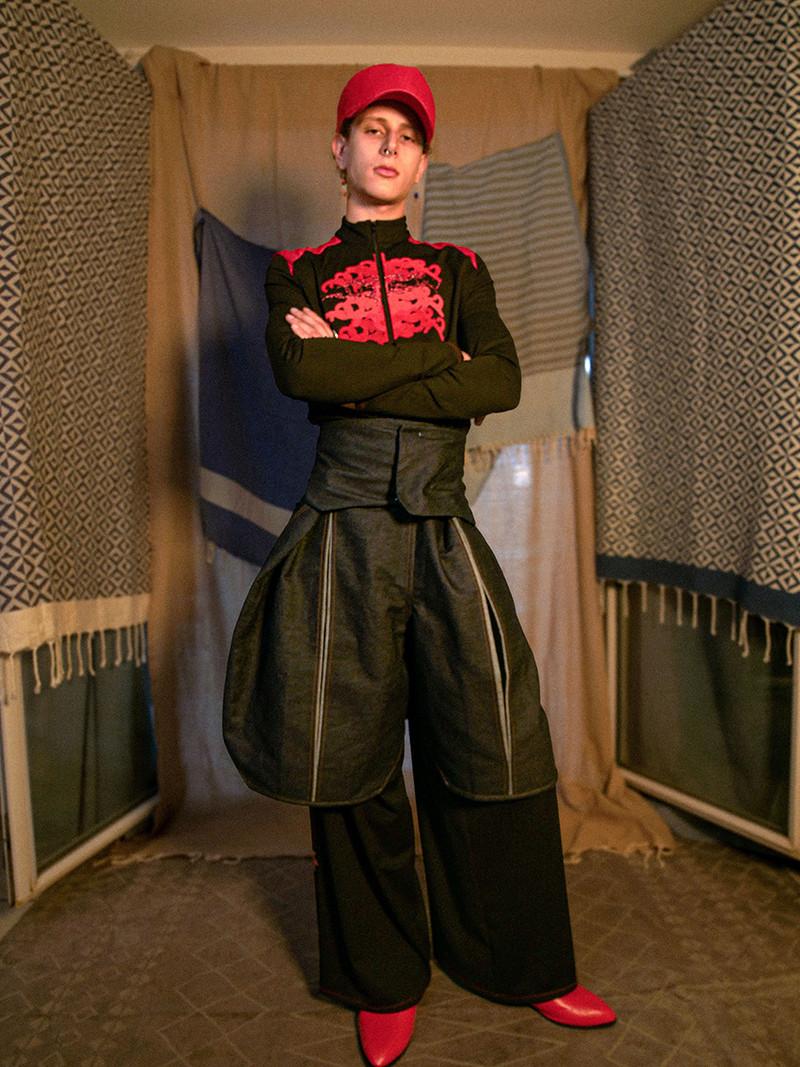
Beyna Benkine by Asma Haddad, photo by ©No.Dhakira, print collaboration with @unimareproject
Through this collection, I chose to tell a story—my own—by merging two familiar wardrobes: Tunisian craftsmanship and sportswear. Beyna Benkine takes functional sports garments out of their usual context and integrates them into everyday life, through a non-Western and identity-driven lens. The collection revives ancestral craftsmanship, balancing memory and modernity.

Everything sinks but the kitchen by Noa Toledano, Partnership: Stoll France, Lang Yarns, Swiss Flax, The Works, Meryl Deguez
How can you accept yourself in the in-between, when you come from a culture that isn’t dominant and you evolve differently from it? My collection explores the paradox one can feel between one’s upbringing and what one becomes afterward, like carrying the remnants of your education while becoming someone else. It comes from my lack of clear images or unified representative heritage about my origins. Sephardic Jewish tradition doesn’t represent per se: it adorns and protects, hides from others’ view. Talking about this void becomes a way of mourning my quest for authenticity. My title, “Everything sinks but the kitchen,” refers to the idiom “Everything but the kitchen sink”: a haste to leave, repairing by any means, noticing the overflow, questioning what we accidentally filter up, maybe anything but the essential. The sink is me, and my flight instincts.


